It was to be expected that someday would replicate this plane
HISTORY:
The McDonnell Douglas F-4 Phantom II is a tandem two-seat, twin-engine, all-weather, long-range supersonic jet interceptor and fighter-bomber originally developed by McDonnell Aircraft for the United States Navy. Proving highly adaptable, it first entered service with the Navy in 1961 before it was adopted by the United States Marine Corps and the United States Air Force, and by the mid-1960s it had become a major part of their air arms. Phantom production ran from 1958 to 1981 with a total of 5,195 aircraft built, making it the most produced American supersonic military aircraft in history, and cementing its position as an iconic combat aircraft of the Cold War.
The F-4 was used extensively during the Vietnam War. It served as the principal air superiority fighter for the U.S. Air Force, Navy, and Marine Corps and became important in the ground-attack and aerial reconnaissance roles late in the war. During the Vietnam War, one U.S. Air Force pilot, two weapon systems officers (WSOs), one U.S. Navy pilot and one radar intercept officer (RIO) became aces by achieving five aerial kills against enemy fighter aircraft. The F-4 continued to form a major part of U.S. military air power throughout the 1970s and 1980s, being gradually replaced by more modern aircraft such as the F-15 Eagle and F-16 Fighting Falcon in the U.S. Air Force, the F-14 Tomcat in the U.S. Navy, and the F/A-18 Hornet in the U.S. Navy and U.S. Marine Corps.
The F-4 Phantom II remained in use by the U.S. in the reconnaissance and Wild Weasel (Suppression of Enemy Air Defenses) roles in the 1991 Gulf War, finally leaving service in 1996. It was also the only aircraft used by both U.S. flight demonstration teams: the United States Air Force Thunderbirds (F-4E) and the United States Navy Blue Angels (F-4J).The F-4 was also operated by the armed forces of 11 other nations. Israeli Phantoms saw extensive combat in several Arab–Israeli conflicts, while Iran used its large fleet of Phantoms, acquired before the fall of the Shah, in the Iran–Iraq War. As of 2021, 63 years after its first flight, the F-4 remains in active service with the air forces of Iran, South Korea, Greece and Turkey. The aircraft has most recently been in service against the Islamic State group in the Middle East.
GENERAL DESCRIPTION:
Role:Interceptor, fighter-bomber
National origin:United States
Manufacturer:McDonnell Aircraft Corporation
McDonnell Douglas
First flight:27 May 1958
Introduction:1961
Retired:1994 (United Kingdom)
1996 (U.S. combat use)
2013 (Germany)
2016 (U.S. target drone)
2021 (Japan)
Status:In limited service
Primary users:United States Air Force (historical)
United States Navy (historical)
United States Marine Corps (historical)
Iranian Air Force
Produced:1958–1981
CONTROLS:
AG1: Arresting hook
AG2: Drop weapons
AG3:Drop fuel tanks
AG6: Afterburner
AG7: Fold wings
Trim:Flaps
AS ALWAYS I HOPE YOU ENJOY IT :)
Specifications
General Characteristics
- Predecessor F-4 Phantom
- Created On Android
- Wingspan 40.0ft (12.2m)
- Length 61.8ft (18.8m)
- Height 19.8ft (6.0m)
- Empty Weight 23,422lbs (10,624kg)
- Loaded Weight 40,467lbs (18,355kg)
Performance
- Power/Weight Ratio 3.332
- Wing Loading 21.2lbs/ft2 (103.3kg/m2)
- Wing Area 1,911.9ft2 (177.6m2)
- Drag Points 12165
Parts
- Number of Parts 260
- Control Surfaces 12
- Performance Cost 1,332


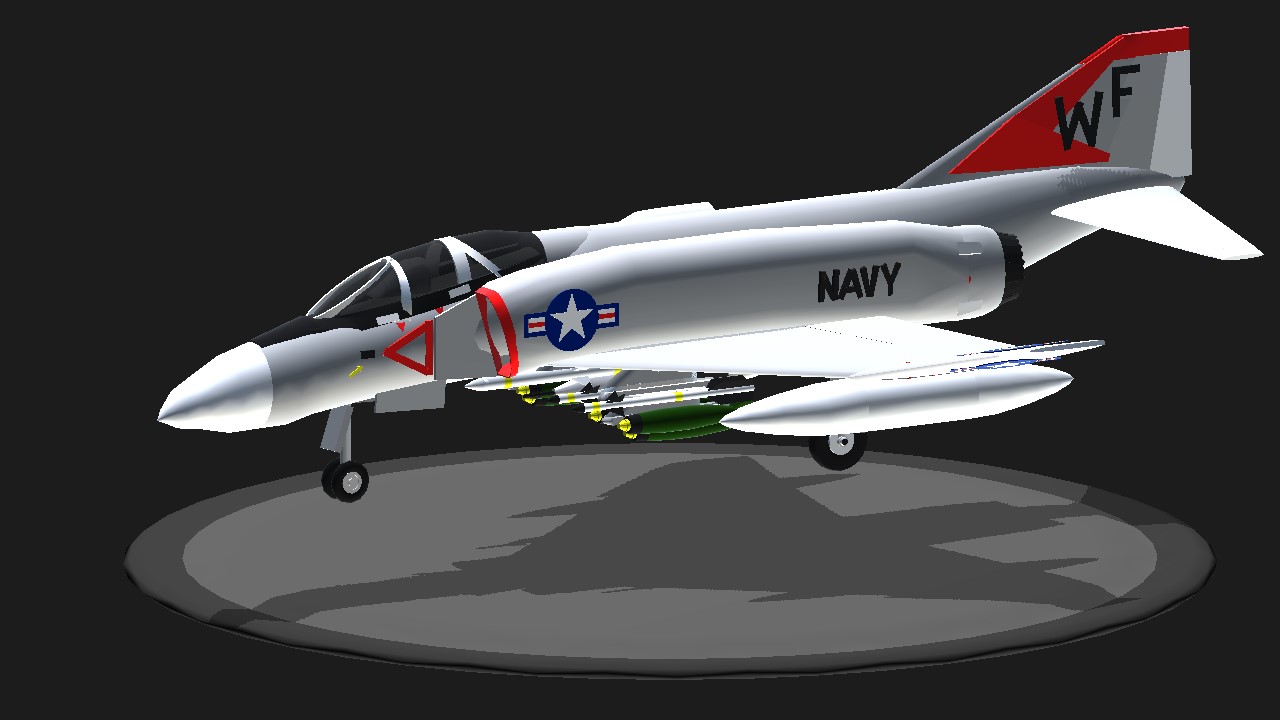
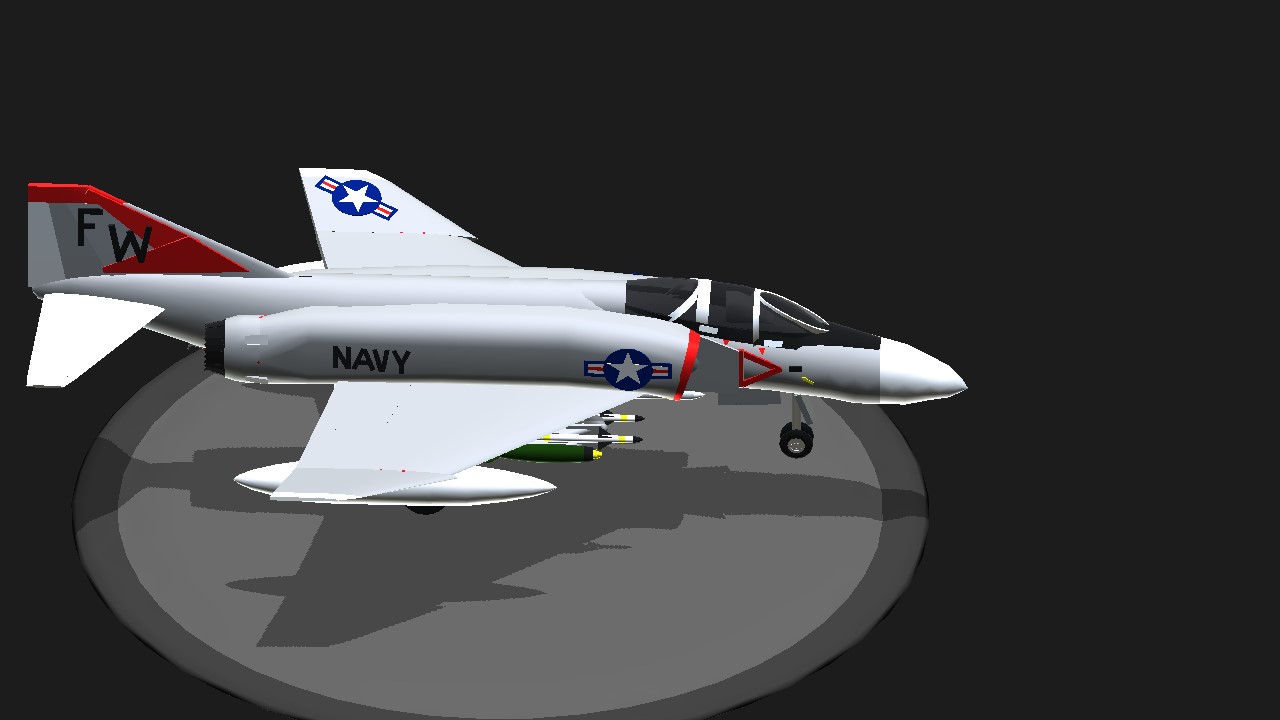
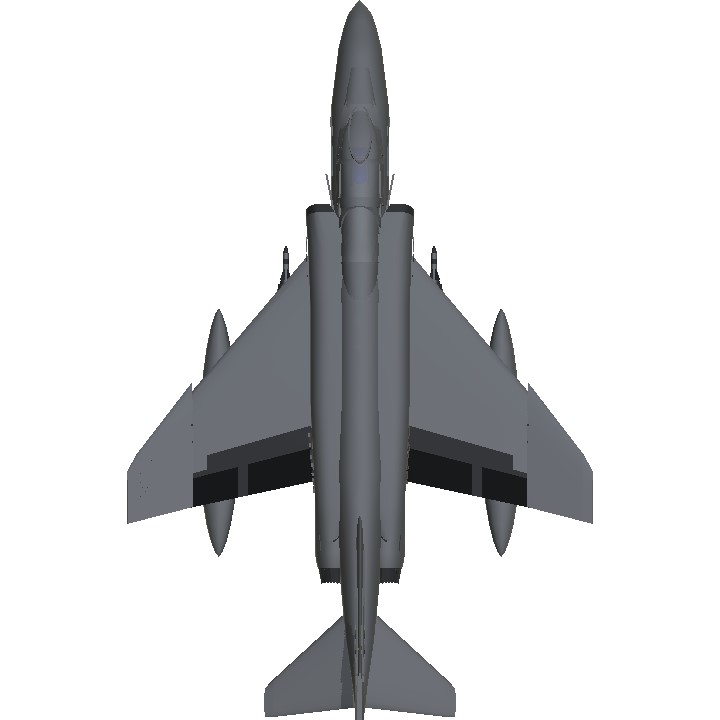
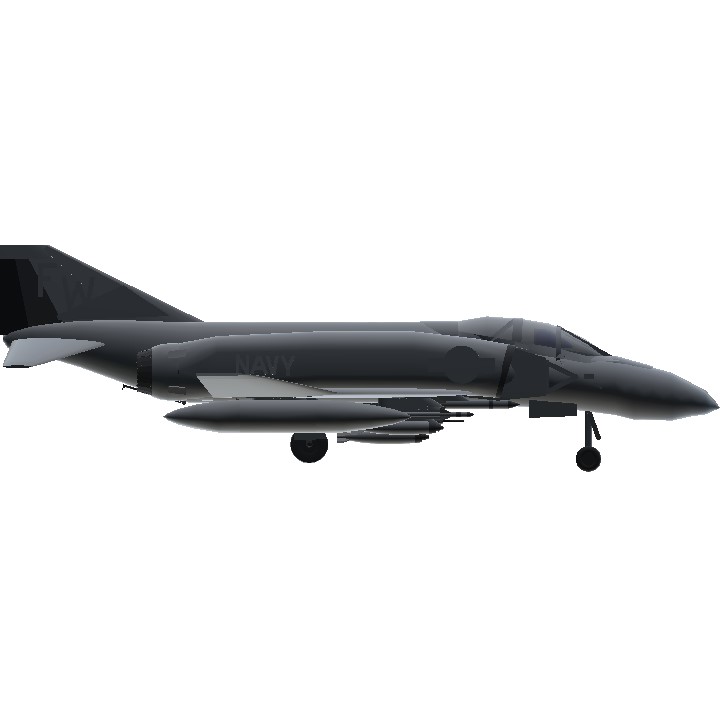
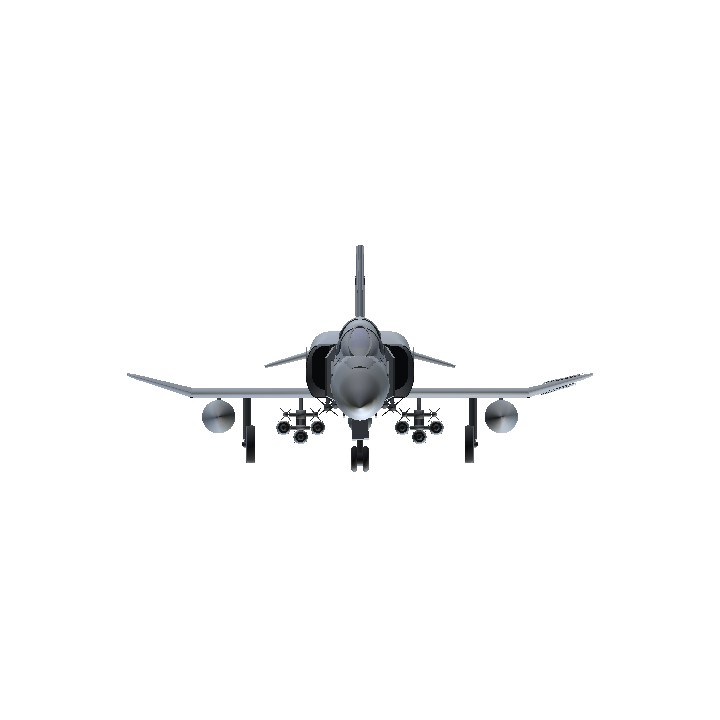
@Sergio666 thank you so much friend :)
Friend, you know, I'm a fan of your planes, especially those with a reaction engine that you build, you have great ideas! @Countryman35
@Inuyasha8215 thanks:)
Elevator controls are inverted, the rudder control is inverted, but other than that, nice Phantom.